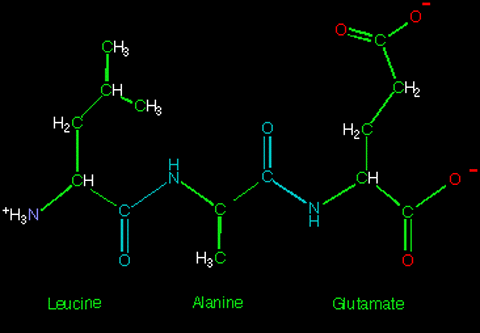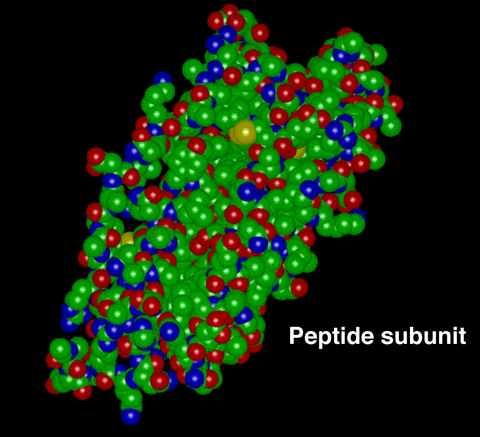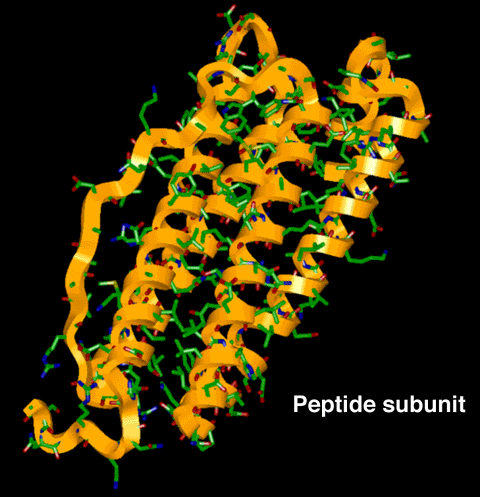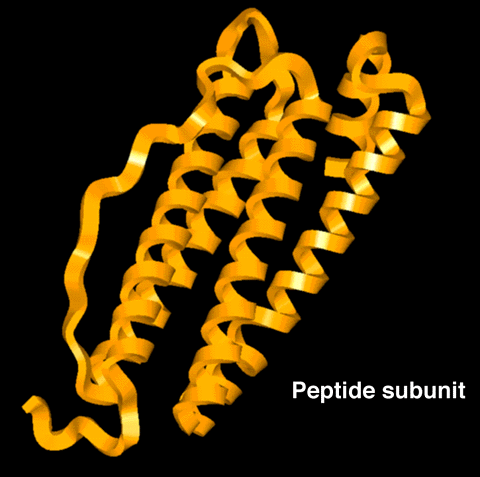
Note: Please use the scroll bar to see the entire link.
As seen in Figure 1 in the Structural Background of Ferritin section of the tutorial, peptides combine to form a protein. A peptide is a molecule formed by two or more amino acids. An amino acid (e.g., leucine) is a carboxylic acid (COOH) that also contains an amino group (NH3).
Below is a sketch of three amino acids (Leu-Ala-Glu) that are bound together and form a part of the peptide subunit found in ferritin. The bonds shown in light blue in this sketch are called peptide bonds and each amino acid in the peptide is called a residue. (There are 172 residues in each peptide subunit in ferritin.)
 |
Below are three representations of the peptide subunit in ferritin. The first representation (Figure 1) is a CPK model of the peptide chain. This gives an approximate volume of the subunit. Figures 2 and 3 show ribbon representations of the peptide.
 |
Figure 1:This is a molecular model of the peptide chain that comprises the ferritin protein. It is shown first in the CPK representation and all of the heavy (non-hydrogen) atoms are displayed. CPK pictures represent the atoms as spheres, where the radius of the sphere is equal to the van der Waals radius of the atom. Note: The carbon atoms are green, the nitrogen atoms are blue, the oxygen atoms are red, and the sulfur atoms are yellow in the CPK model. |
 |
Figure 2:Another common representation for proteins and peptides is the ribbon, which traces the backbone of a protein or peptide. This representation does not include the atoms in the sidechains of the residues and is often used to represent the three-dimensional structure. Notice the bundle of helical, or coiled, parts of the backbone. This figure shows a ribbon superimposed on a stick representation that does show the amino-acid sidechains. |
 |
Figure 3:This is a ribbon representation of the peptide chain without being superimposed on the stick representation. |
Return to Structural-Background Section of Tutorial